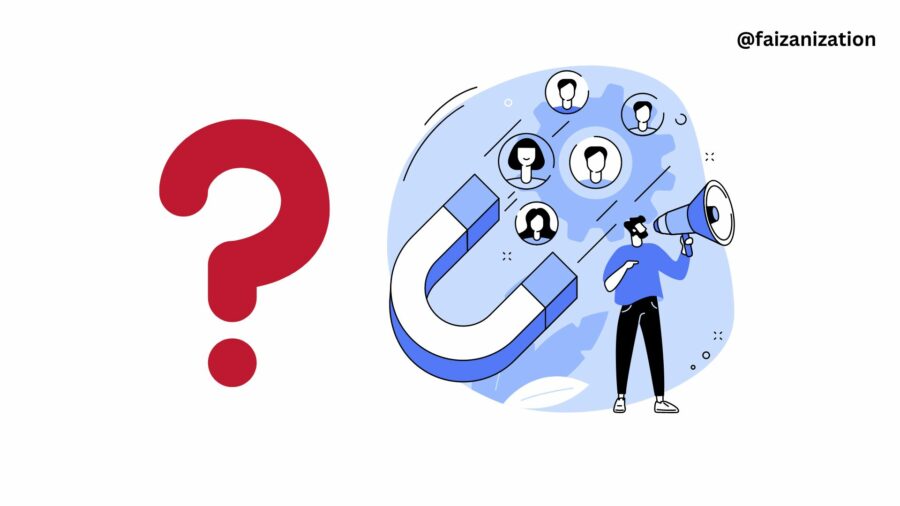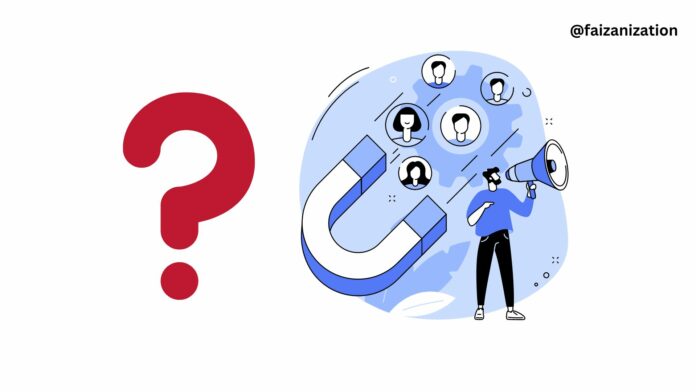
Are you struggling to generate leads for your business? Despite your best efforts, are you finding it difficult to attract qualified prospects who are interested in your products or services? If so, you’re not alone. Many businesses face challenges when it comes to lead generation, and there could be several reasons why your efforts are falling short.
In this blog post, we will explore some of the major factors that might be hindering your lead generation success. From targeting the wrong audience to neglecting lead nurturing and overlooking the power of social media, we will uncover the key areas that require attention and provide valuable insights on how to overcome these obstacles. So, let’s dive in and discover why lead generation is not working for your business.
- Doing it all wrong
One of the biggest reasons could be executing your campaigns in the wrong way. It’s essential to use the right channels and target the correct audience for the product or service you are promoting. Failing to align your campaigns with your target market can lead to poor results and wasted resources. Take the time to understand your audience’s preferences, behaviors, and pain points, and tailor your lead generation strategies accordingly.
- Not having a CRM to manage your leads
Customer Relationship Management (CRM) software is not just a tool for managing customer data; it can play a vital role in lead generation. A CRM system allows you to efficiently manage your fresh leads while also nurturing your existing or old leads. By building intelligence around each contact and having a solid mechanism to capture more leads, a CRM can streamline your lead generation efforts. Not having a CRM or using an inadequate system can hinder your ability to effectively track and engage with leads.
- Who are you targeting?
Another crucial factor is not clearly defining your target audience. If you don’t know who your ideal customers are, how can you effectively generate leads? It’s essential to understand your target market’s demographics, interests, and pain points. Without this knowledge, your lead generation efforts will be scattered, and you’ll struggle to attract qualified leads. Take the time to research and develop detailed buyer personas that reflect your ideal customers. This will enable you to create targeted and personalized campaigns that resonate with your audience.
- Lack of compelling content
Content is king, and it plays a pivotal role in lead generation. If your content fails to captivate and engage your audience, you won’t be able to generate quality leads. Your content should be informative, valuable, and tailored to address your target audience’s needs. It should establish your expertise and provide solutions to their problems. Invest time and effort into creating high-quality content that resonates with your potential leads. Use a mix of blog posts, videos, infographics, and ebooks to educate and engage your audience.
- Neglecting lead nurturing
Generating leads is just the first step. Many businesses make the mistake of neglecting lead nurturing, which is essential for converting prospects into customers. Once you capture a lead, it’s crucial to engage with them through personalized communication and valuable content. Nurture your leads by sending targeted emails, offering exclusive content, and providing relevant information to keep them interested and moving through the sales funnel. By building a relationship with your leads and addressing their specific needs, you increase the chances of converting them into paying customers.
- Overlooking the power of social media
Social media platforms are powerful tools for lead generation. If you’re not leveraging them effectively, you’re missing out on a significant opportunity. Create a strong presence on platforms like Facebook, Twitter, LinkedIn, and Instagram, depending on where your target audience is most active. Share engaging content, run targeted ads, and interact with your followers to generate leads. Social media provides a platform for building brand awareness and establishing credibility. Use social media analytics to track your performance and adjust your strategies accordingly.
- Lack of optimization
Your lead generation efforts may fall short if you’re not optimizing your landing pages, forms, and call-to-actions. These elements should be designed to capture leads effectively. Make sure your landing pages are visually appealing, have clear and concise copy, and include persuasive calls to action. Optimize your forms by keeping them short and asking for only essential information. Test and analyze the performance of your lead generation assets regularly to identify areas for improvement and optimization. A/B testing can help you determine the most effective elements and refine your approach.
- Inconsistent or insufficient follow-up
A common mistake businesses make is not following up with leads promptly or consistently. When a lead expresses interest, it’s crucial to respond promptly and provide the information they requested. Delayed or inconsistent follow-up can lead to lost opportunities. Implement a robust lead management system that ensures leads are assigned, tracked, and followed up within a timely manner. Consistency and responsiveness are key to nurturing leads and guiding them toward conversion. Use automation tools to streamline your follow-up process and ensure no lead falls through the cracks.
- Failure to track and analyze
Without proper tracking and analysis, it’s difficult to gauge the success of your lead generation efforts. You need to measure key metrics, such as conversion rates, lead quality, and return on investment (ROI). Use analytics tools to track website traffic, form submissions, and lead sources. Analyze this data to identify what’s working and what’s not, allowing you to make data-driven decisions and optimize your lead generation strategy accordingly. Regularly review your analytics reports to gain insights into your performance and make informed adjustments to your lead generation tactics.
- Ignoring the importance of referrals
Referrals can be a goldmine for lead generation, yet many businesses overlook this valuable source. Happy customers and satisfied clients can become your brand ambassadors, referring their contacts to your business. Implement a referral program that incentivizes your existing customers to refer others. Offer rewards, discounts, or exclusive benefits for successful referrals. Word-of-mouth recommendations have a high level of trust and can bring in quality leads with minimal effort. Don’t underestimate the power of referrals in expanding your customer base.
In conclusion, lead generation may not be working for your business due to a combination of factors. It’s important to evaluate your strategy, identify any weaknesses, and make the necessary adjustments. Remember to have a clear understanding of your target audience, create compelling content, nurture leads, leverage social media, optimize your assets, follow up consistently, track and analyze your results, and tap into the power of referrals. By addressing these areas, you can enhance your lead generation efforts and drive sustainable growth for your business.









